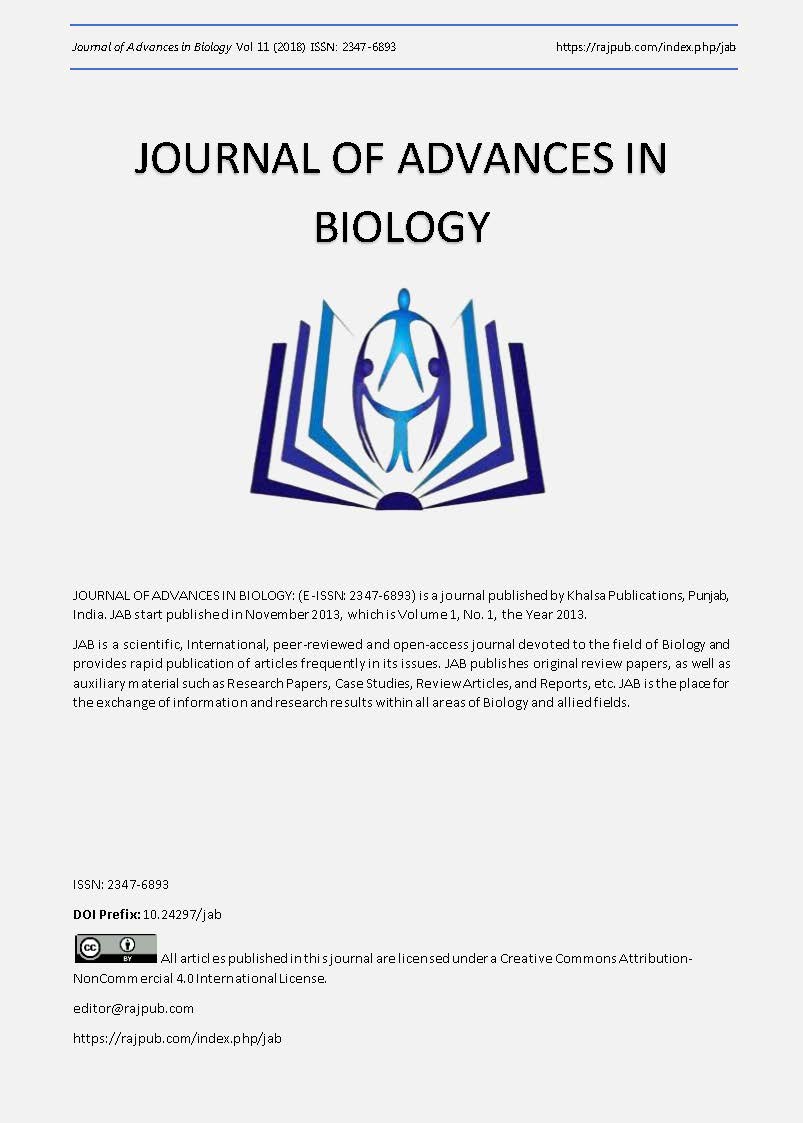Exploratory Study of Xanthine Dehydrogenase (XD) Accumulation in Chicks’ Organs: XD Natures and its Inhibitory Activities
DOI:
https://doi.org/10.24297/jab.v11i0.7825Keywords:
Xanthine Dehydrogenase, Enzymatic Activity, Adenosine, Pituitary Extract, L-Epinephrine, CharcoalAbstract
Few researches have indicated the availability of xanthine dehydrogenase in some parts of chicks, the enzymatic activity, and the rate of enzyme synthesis during the first few days after hatching. In addition, studies were conducted to examine the relationship between changes in xanthine dehydrogenase in some of these parts and some biomarkers as the excretion of uric acid in chicks fed diets. The developmental changes between xanthine oxidase in these parts and adenosine have also been observed before. However, in the current project, the developmental changes (including organ activity) in xanthine dehydrogenase activity of kidney, liver, pancreas and duodenum are investigated. Unincubated White Leghorn eggs and day-old male chicks were brought. Chicks were fed (Startena) ad libitum and eggs were injected in three sequential days and embryos were gotten on day 19th. Some organs (as liver, kidney, duodenum, and pancreas) tissues of the embryos were isolated and treated with potassium phosphate solution and treated with charcoal and centrifuged. The extracts were let to react with 2-amino-4-hydroxypteridine and NAD in phosphate buffer in order to check the activity using a fluorometer. Specific activities of the xanthine dehydrogenase in organ tissues are listed as micromicromoles of substrate oxidized per minute per milligram protein. Besides, the xanthine dehydrogenase activities in these active tissues were measured from day 17 of incubation to a week after hatching. We reached to a conclusion that the enzyme was formed in the kidney several days prior to hatching and this had stimulated the liver, duodenum, and kidney at hatching in addition, to the central nervous system which resulted in a sensible modification of the pituitary function. Tracking the xanthine dehydrogenase activities in these organs showed no influence on the enzymatic activities except for pancreas which related to dietary situation that clearly refers to a possible interfering agent in the food which opens new arguments. As a result, our study has lucratively discovered 3-types of xanthine dehydrogenases in fledglings.
Downloads
References
Naseri, D., Asasi, K., Karimi, I. 2017. Similar developmental fluctuations of hepato-renal xanthine oxidoreductase gene expression and xanthine oxidase activity in layer and broiler chicken embryos. Br Poult Sci., 58(2):144–150.
Iyer, K.R., Kadam, R.S. 2007. Isolation of different animal liver xanthine oxidase containing fractions and determination of kinetic parameters for xanthine. Indian J Pharm Sci., 69(1):41.
Irondi, E.A., Oboh, G., Agboola, S.O., et al. 2016. Phenolics extract of Tetrapleura tetraptera fruit inhibits xanthine oxidase and Fe2+-induced lipid peroxidation in the kidney, liver, and lungs tissues of rats in vitro. Food Science and Human Wellness. 5(1):17–23.
Terawaki, H., Murase, T., Nakajima, A., et al. 2017. The relationship between xanthine oxidoreductase and xanthine oxidase activities in plasma and kidney dysfunction. J Clin Exp Nephrol., 2(1):31.
Wang, C.H., Zhang, C., Xing, X.H., 2016. Xanthine dehydrogenase: An old enzyme with new knowledge and prospects. Bioengineered. 7(6):395–405.
Kedam, T.R. 2017. Lead acetate effects on hepatocyte degeneration in chick embryo liver. World J Pharm Pharm Sci., 6(8):203–209.
Parisi, G., Carfagna, M., D'Amora, D. 1976. Biosynthesis of dihydroxanthommatin in Drosophila melanogaster: Possible involvement of xanthine dehydrogenase. Insect Biochem., 6(6):567–570.
Aljerf, L., Alhaffar, I. 2017. Salivary distinctiveness and modifications in males with Diabetes and Behçet's disease. Biochem Res Int., 2017:1–12.
Chakravarthi, P.V., Selvaraju, M. 2017. Comparative evaluation of xanthine oxidase inhibitory activity of Allium ceba L., AzadirachtaindicaA.Juss. and Piper betle L. Ann. Phytomed., 6(1):132–135.
Chandra, P., Mendiola, L., Cole, R.D. 1960. The effect of prolactin on the xanthine oxidizing activity of pigeon tissues. Endocrinol., 66(3):315–317.
Aljerf L. 2018. Toxicological investigations in food. Global J Nutr Food Sci., 1(1):1.
Bedrak, E., Perek, M. 1963. The bursa of fabricius and xanthine oxidase activity of liver and kidney following dietary supplementation of iodinated casein to chickens. Poult Sci., 42(2):534–536.
Nishino, T., Okamoto, K., Eger, B.T., et al. 2008. Mammalian xanthine oxidoreductase - mechanism of transition from xanthine dehydrogenase to xanthine oxidase. FEBS J., 275(13):3278–3289.
Fredholm, B.B., Lindström, K. 2009. The xanthine derivative 1-(5?-oxohexyl)-3-methyl-7-propyl xanthine (HWA 285) enhances the actions of adenosine. Acta Pharmacol Toxicol., 58(3):187–192.
Downloads
Published
How to Cite
Issue
Section
License
 All articles published in Journal of Advances in Linguistics are licensed under a Creative Commons Attribution 4.0 International License.
All articles published in Journal of Advances in Linguistics are licensed under a Creative Commons Attribution 4.0 International License.




